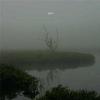- Administrator
- Albums and Singles
 The electronic improviser's first solo release (after collaborations with the likes of Kevin Drumm and Zbigniew Karkowski) is a succinct yet powerful burst of harsh analog noise that is reminiscent of the old titans of Japanese noise, yet still allows for some rhythmic elements that are consistent with the current scene.
The electronic improviser's first solo release (after collaborations with the likes of Kevin Drumm and Zbigniew Karkowski) is a succinct yet powerful burst of harsh analog noise that is reminiscent of the old titans of Japanese noise, yet still allows for some rhythmic elements that are consistent with the current scene.
The dividing line between "noise" and "power electronics" was always questionable back when I was balls deep in the scenes in the late 1990s. Usually the latter had vocals and some semblance of rhythm, while the former was even more dissonant. More recently the barrier seems to have been broken down even more, and this disc, from a Polish artist I had never initially heard of, clearly falls into both camps. Consisting of four tracks, we get both the pounding rhythms and tortured analog synths of the power electronics kids, while the noise crowd is represented in sheer volume and brutality.
Leading off with "The Initial Speech," there's more of a modern day noise mixed with power electronics vibe. A pounding monotone rhythm gets progressively more and more distorted as time wears on until it is eventually a massive wall of noise with a barely audible thump buried in the mix before it slowly disintegrates. "4th Floor Meeting with Detailed Instructions" drops the overt rhythm but makes do with some notable loops amongst the noise. To use the crutch of artist comparisons, it doesn't quite meet Pain Jerk style spastic rhythm loops that dorky indie kids could find a way to dance to, it's more akin to the cut and paste brutality of Government Alpha.
Extending the use of comparisons, "Last Broadcast of Public Speakers" is based on prominent mid to high range tones sustained throughout the mix of noise and distortion, so not far removed from some of the earlier Incapacitants works. The final 11 minute track encompasses the album as a whole: more of a compositional feeling building from a slow beginning to bassy loops and fragments of distortion. As a whole it’s more drone oriented, with what may be processed vocals sounding like the screams of demons.
As a whole, it's not an easy listen: it is violent, dissonant, and brutal. Unlike folks like Wolf Eyes, there aren't any concessions to conventional rhythm or song structure. But that's what most good noise is like so people who can easily discern Merzbow from Masonna will most likely enjoy the hell out of this.
Finally, the packaging is amazing The CD is in a pop up folder (which seems to be the standard packaging for the emd.pl label), but in this case it’s a pliable soft plastic, red and clear, and resembling the CD poking out of an open wound once opened. It's both subtle and very cool.
samples:
Read More
- Administrator
- Albums and Singles
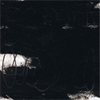 It's an odd proposition for a compilation: have the participants, most who are well known luminaries in the modern electronic avant garde world, submit tracks for a compilation that are idiosyncratic by nature, or essentially a very specific piece unlike their 'normal' work. The product of which is a surprisingly diverse mix with little in the way of 'low' spots, and also makes for a great genre introduction.
It's an odd proposition for a compilation: have the participants, most who are well known luminaries in the modern electronic avant garde world, submit tracks for a compilation that are idiosyncratic by nature, or essentially a very specific piece unlike their 'normal' work. The product of which is a surprisingly diverse mix with little in the way of 'low' spots, and also makes for a great genre introduction.
Although idiosyncratic by definition, some of these tracks are not completely out of left field for the genre, such as opener Janek Schaefer's "Scarlet Arrives," constructed from deep synthetic rumbles, organic tones, and some vinyl surface noises. Others do intentionally break from their expected styles, such as noise legend KK Null opting to work with digital percussion sounds instead of his trademark guitar destruction on "Idioscape/Decomposition." Northwestern US maniac Daniel Menche also contributes "Cadence," which, instead of going for full on textural noise destruction instead opts to gentily utilize percussion and focus on calm tones in order to construct a filmic, soundtrack type piece.
Others take the concept to far left field even more so. Modern minimalist clown prince Charlemagne Palestine's "La Beaute et la Bete" uses the title to a literal level, mixing his extended organ drones with a field recording of a farm or a petting zoo, and, well, a nice helping of porno samples. It's a do-it-yourself bestiality soundtrack guaranteed to induce laughter. Norwegian miscreants Jazkamer submit "Ruido Rosa 5 Minutos," which makes for a lo-fi crunchy burst of noise that isn't too different from Lasse Marhaug's harsher noise solo work, however a little softer and mellower. The most out of place track on here is Steffen Basho-Junghans' simple track of acoustic guitar that is of a simple motif that gradually layers itself thicker and thicker throughout, probably only due to instrumentation.
While they're not necessarily out of place, a few contributions don't stand out as being unique or fascinating, such as those by Troum and Eve and the Sickness. They're not really "stinkers" by any means, just ones that are overshadowed by the more unique works here. The nice thing is what makes this beginner-friendly is that the tracks are nice and bite sized (unlike the sprawling epics indicative of this genre) and the artists' contributions are different enough that established fans will be eager to hear what's here, but consistent enough with prior work that it will draw in newcomers without disappointing them.
samples:
- KK Null - Idioscape/Decomposition
- Charlemagne Palestine - La Beaute et la Bete
- Daniel Menche - Cadence
Read More
- Administrator
- Albums and Singles
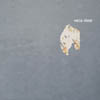 On this sprawling double disc compilation (one all new material, the other reworkings of the aforementioned material), there is a combination of an artist trying out new things, but presenting them in the framework of a DJ mix album. It's a difficult proposition, but one that works.
On this sprawling double disc compilation (one all new material, the other reworkings of the aforementioned material), there is a combination of an artist trying out new things, but presenting them in the framework of a DJ mix album. It's a difficult proposition, but one that works.
Hecq trounces across electronic music's genre boundaries on the 17 numbered tracks that make up this album, fusing elements of ambient, industrial, hip-hop, and the unfortunately named IDM, into what feels like a mix compiled for the club, but one done by an expert DJ who can take the somewhat disparate styles and coalesce them into a consistent, flowing album.
The more "out there" tracks, such as the alien voices and choral samples present in "0008" and the dying throes of an old sampler that make up "0009" manage to hang nicely with the soft, gentle synth organ of "0011" and "0016." Putting these next to the breakdance-friendly classic hip-hop beats of "0003" and the Autechre-esque sputtering loops and crunches of "0014" seems like a dangerous proposition, but Hecq pulls it off, meshing just the right amount of commonality between the very different styles. There are some other moments that are oddly bizarre as well, like the random sampler bursts and field recordings on "0004" and the softcore power electronics of "0015."
The second disc doesn't quite meet the high bar set by the first one, which isn't a surprise given the nature of outsourced remixes. The two remixes of "0001" submitted by Rekt put the stress on the beats (which were essentially absent in the original version). The first sticking closer to the dance floor with thumping beats, however the second is techno for automobile construction robots: all distorted fuzzy thumps and factory noise rhythms. With one exception the remixes (by the likes of Mad EP, Snog, Newt, and other, lesser known artists) keep the tracks more on the dance floor instead of the chill-out zone and put more focus on the beats and rhythms. The exception is Sknss [vs. Snog] which abandons the beats in lieu of digital ambience, which is all well and good, but for some reason Snog saw fit to add in some stereotypical goth/industrial vocals, which really detract from the track and causes it to stick out of place amongst the other tracks included, in a bad way.
Single misstep aside, Hecq has assembled a wide-reaching compilation of different electronic styles within his own work. Additionally, it contains a variety of remixes that may not really break any new ground or do anything exceptionally unique but still make for an entertaining listen.
samples:
Read More
- Administrator
- Albums and Singles
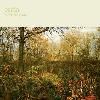 Earth might well be pioneers, but Hibernaculam feels like its treading water and diluting what made Dylan Carlson's project so great. Cleaned up and thinned out, these three re-versions of Earth tracks and a b-side feel like empty filler. Celebrating repetition over creating atmospheres, this is Earth hollowed from the inside out, the shell of the tracks brittle and insubstantial. By attempting to recontextualize Earth's music within classic American music forms means that it has lost what made it great; the fact they didn't fit in.
Earth might well be pioneers, but Hibernaculam feels like its treading water and diluting what made Dylan Carlson's project so great. Cleaned up and thinned out, these three re-versions of Earth tracks and a b-side feel like empty filler. Celebrating repetition over creating atmospheres, this is Earth hollowed from the inside out, the shell of the tracks brittle and insubstantial. By attempting to recontextualize Earth's music within classic American music forms means that it has lost what made it great; the fact they didn't fit in.
The drone is gone, and the riffs, like well kept graves, are stiffly arranged in recurring blocks, even becoming a little comedic in their moodiness. Redoing this material in a style similar to Hex, just doesn't work. Cutting "Ouroboros is Broken" right back means that the very moment when it breaks free of the AOR trudge is the point where the song ends. The expanse of desert horizon is only just visible after the meandering plod, the 1991 version leaves the listener stranded there. The reiteration of the riff in "A Plague of Angels" creates boredom, not trance. Its predictable chord changes following the dramatic style of copyists Sunn 0))); where once Earth led, now they follow. Carlson's loss of plot and attempts to move Earth from their epic drone/doom rock place the band in the dire overpopulated swamp of instrumental rock.
The documentary disc "Within the Drone" is a poor companion piece, and while it might help to put cracks in their myth which can only ever be a good thing, it doesn't exactly hold the attention. The long shots out the front of the tour bus might manage to fully express the boredom of that 2006 European tour, but the live clips of Earth on stage shouldn't be doing the same thing. The performance footage is laborious, sounding thin, stretched and dull rather than the elephantine widescreen of their early records. The interview footage of Carlson and his tales of what he nearly managed to do between being fucked up or being in rehab are average but tantalizing. They only serve to show what might have been had he made Earth the focus of his time, instead of skag. Laying off the cigarettes wouldn't kill him either, sounding he's permanently just in the process of waking up after a night on the tiles. He does get into an interesting area when he gets into his interest in drone, but the majority of his conversation lacks anything of any real substance.
samples:
Read More
- Administrator
- Albums and Singles
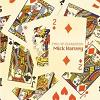 Mick Harvey's third release in less than two years is one of the finest albums he has ever put his name to. Like his previous solo output, this album is largely composed of pristine covers with a couple of songs written by Harvey thrown in for good measure. Covering artists closer to his heart has resulted in a far stronger album than 2005's One Man's Treasure. As a Bad Seed too often overlooked, it is great to hear him produce such a gem.
Mick Harvey's third release in less than two years is one of the finest albums he has ever put his name to. Like his previous solo output, this album is largely composed of pristine covers with a couple of songs written by Harvey thrown in for good measure. Covering artists closer to his heart has resulted in a far stronger album than 2005's One Man's Treasure. As a Bad Seed too often overlooked, it is great to hear him produce such a gem.
Mute
Harvey spends a sizeable chunk of the album paying tribute to Australian artists that have heavily influenced his own music from The Boys Next Door all the way up to his current work. Songs by The Saints, The Triffids and The Loved Ones are performed with great respect; The Saints' "Photograph" is a fantastic opener to Two of Diamonds. Harvey sounds completely at home here; the same loving treatment of these songs is present on this album like it was on his two Gainsbourg tribute albums. Another strong Aussie influence comes in the form of Simon Bonney, whose Crime and the City Solution featured Harvey heavily. The Crime song "Home is Far from Here" closes the album, Harvey's voice may not be as strong as Bonney's but he still infuses the song with the same power as the original.
His own songs stand proud amid all the other fine examples of songwriting on Two of Diamonds. It is always hard not to compare what Harvey does in his own time with his role in the Bad Seeds. While the two songs included here are unmistakably Harvey's work, he steps out further from Nick Cave's shadow here than he has before. "Blue Arrows" sounds very different from anything the Bad Seeds have done, the sentiment is the same but Harvey's arrangement is quite unlike anything from the eclectic repertoire of the Bad Seeds.
Overall, Two of Diamonds is a cracking album. Harvey sounds completely comfortable with all the songs, which all suit his voice perfectly. The self-penned songs in particular are very good; hopefully it will not be long before he puts together a complete album of original songs. Considering his role in the Bad Seeds does not seem to be as strong as it once was, it would not surprise me in the least if he concentrated on his solo work even more. If it results in more albums like this, I would be delighted if he took time out from the Bad Seeds to write and record more of his own material.
samples:
Read More
- John Kealy
- Albums and Singles
Given the song titles, both are unsurprisingly reminiscent of "Sun Day" from the debut album. However, the more melodic elements that crept in with the following releases is also present. "Sun Down" shifts between the patented Broadrick heaviness and the dreamy shoegaze textures that he has embraced in these last few years. About halfway through the sound drops dramatically before a gorgeous melody takes over with Diarmuid Dalton's bass providing a warm environment for Broadrick to work in. The heavily processed guitar sound of Fennesz comes to mind, the end result is stunning.
The flipside's "Sun Rise" maintains ideas explored on "Sun Down"—a brooding rumbling sound gives way to several layers of guitar, heavily distorted chords pushed far into the mix with a number of clean guitar tracks creating a shimmering refrain. With each bar, it gets a little more lush as Broadrick adds another element to the sound or just changes the levels between the different components. When Broadrick's lyrics finally come in, they are completely obscured by the music but become clearer and clearer with each repetition. This effect of building the piece up and up works well, Broadrick's treatment of the sound is subtle that it is only after about five minutes it becomes clear that so much has been slowly added to the song.
Sun Down/Sun Rise is further proof that Jesu is some of Broadrick's best work. I have always had a lot of time for all his projects but I feel with Jesu that he has found his voice. Granted that much of his work with Jesu is based within clear limits but considering the vastly different bands and solo projects that he has done in the past, it is silly to think that his work is just more of the same. All of his work is an exploration in sound and the name on the spine is only an indication of what frame of mind he was in at the time of recording this particular release. This EP is sterling work and is definitely up there with the best of Broadrick's output.
Read More
- Administrator
- Albums and Singles
 The material that makes up Her Name was recorded across the world over 2006 and features vocal contributions from local musicians that treats the voice not as much as a means of communication, but as a unique instrument unto itself.
The material that makes up Her Name was recorded across the world over 2006 and features vocal contributions from local musicians that treats the voice not as much as a means of communication, but as a unique instrument unto itself.
It is meaningless to even try and categorize this work, as the style changes drastically from track to track. About the only consistent elements are the use of voice and the abstract electronics Bosetti provides. The use of vocals varies greatly, from the title track's effected, up front spoken word style, mixed with guitar and piano, to "Her Face," which is much more akin to Middle Eastern vocal styles alongside noisy electronics in the background.
"Mask" is the most conventional of the tracks here with prominent vocals with standard jazz drums and piano; the electronics take more of a back seat here. "Idiot," on the other hand, is by far one of the odder moments of the disc, the first half being a collage of processed voices and vocals over trumpet which then segues into an out of tune shortwave radio and jazz bass combo with female bossanova vocals added in. "It's Me" returns to the improvised vocalisms over electric guitar. The closer, "Fumatore Non Fumatore" is stripped down leaving just a backwards melody, piano, and some very gentle vocals.
The beautifully simple packaging belies the recording. From the oversized card sleeve that is primarily tan and black, a very austere and serious recording would be expected, but instead it is a very warm, joyful recording. The performers and vocalists can often be heard laughing throughout, which isn't something usually expected in this genre.
samples:
Read More
- Administrator
- Albums and Singles
Modeselektor will be releasing their second album, Happy Birthday! on BPitch Control on September 11, 2007. After playing tons of shows from Sydney to Iceland last year, Modeselektor's Gernot and Szary holed up in their mobile airstream caravan recording studio in order to give birth to this new album. The record is once again a description of the constant state of mind of the duo from Berlin-Wedding. Not only are they on the same wavelength professionally through touring and working in the studio, but in their private lives as well, as both will become fathers very soon, hence the title Happy Birthday!
Thom Yorke, Maximo Park, Puppetmastaz, Paul St. Hilaire, Otto von Schirach, Siriusmo and the French Rap gang TTC all make guest appearances on Happy Birthday! The repertoire of Happy Birthday! goes from hard rap à la French to Dubstep to Eurocrunk to Continental Grime to Tech-Rap and more.
Tracklist:
01. Godspeed
02. 2000007 (feat.TTC)
03. Happy Birthday
04. Let Your Love Grow (feat. Paul St. Hillaire)
05. B.M.I.
06. EM ocean
07. Sucker Pin
08. The First Rebirth
09. The Dark Side of the Frog
10. The Dark Side of the Sun (feat. Puppetmastaz)
11. Black Block
12. Edgar
13. hyper hyper (feat. Otto von Schirach)
14. Late Check-Out
15. The Wedding Toccata Theme
16. The White Flash (feat. Thom Yorke)
17. Déboutonner (feat. Siriusmo)
+ Bonus track: "I Can´t Sleep (Without Music)" (feat. Maximo Park)
(on original CD release only)
Read More
- Administrator
- Albums and Singles
 Fully divested of their signature drones, Growing explores rythmic loops and unnatural electronics. An acquaintance of mine has expressed his dismay that Growing turned away from their established sound, but I applaud their efforts. The result is easily their most engaging and unique album yet.
Fully divested of their signature drones, Growing explores rythmic loops and unnatural electronics. An acquaintance of mine has expressed his dismay that Growing turned away from their established sound, but I applaud their efforts. The result is easily their most engaging and unique album yet.Judging from their early work, it would be difficult to think of a more evocative name for this band. It perfectly described their deliberate, serene drones. The fullness of their sound suggested the slow creep of vegetation, or a warm primordial sea. But in the years that followed Soul of the Rainbow and the Harmony of Light, Growing gradually distanced themselves from drone-based composition. This has culminated in Vision Swim. The new Growing doesn't evoke organic processes at all, but rather the incessant clatter of the big city. Instead of static drones and washes of sound, this album is constructed with squawking beeps and lurching swells that remind me more of electric appliances and communications chatter than anything suggested by the name Growing.
The second track, appropriately named "Onanon," is built on synthetic bleeps and drilling blasts of noise over a ratcheting rhythm track. The song could have become monotonous and grating, but subtle rhythm changes keep it fresh. Halfway through, delayed harmonic swells enter and the mood softens. From this point, the song could have progressed into a murky drone, but the chaotic tones re-enter, and the song ends with jackhammer-like sweeps of noise panning across the speakers. "Morning Drive" lives up to its automotive themed title, a metaphor for driving in sound. The song utilizes the Doppler Effect cleverly. The sounds here echo and bend like the distant roar of engine noise and whipped up air heard at a race track. When guitar loops enter the mix, their notes bend and fade in and out just like the samples in the foreground. These dissolve into a warm cloud of reversed swells and purring electronics, suggesting a tranquil ending to the drive.
Growing throws in a dud on each their albums, and this one is not an exception. The track "Emseepee" consists of a rubbery synth-bass loop and electronic squeals that immediately made me think of cybernetic pigs. The sounds themselves are not unpleasant, but they begin to sound stale because of a lack of dynamics. Fortunately the track is short, and some listeners might appreciate it as an interlude between the longer pieces on the album. The closing track "Lightfoot" returns to a more solid drone, but it retains the album's dynamism and fits comfortably with the more spastic pieces it follows. Deeply reverbed static and whirring tones pan across the speaker, bending and expanding in gentle succession. The tone is luminous but unsteady, like bright city lights reflected off ocean waves. Tremolo effects cut into the sound, whipping up swells of static like the propeller of a speed-boat. As the effects become more prominent in the mix, the music disintigrates into short fragments that pop in and out abruptly, tearing the song apart altogether.
My first impression was that Vision Swim sounded drunk and the arrangements awkward, but successive listens reveal its unique structure. This is a dynamic album filled with bouncing rhythms and mercurial progressions. Except for "Lightfoot," there is nothing here that could be considered drone music at all. Instead of holding a tone for minutes at a time, Growing throw out sounds and then immediately pull them away, changing them each time they re-appear. Even the underlying loops mutate, growing louder then gently melting away into gentle atmospherics.
Joe Denardo and Kevin Doria have introduced a new level of detail and dynamism, and it animates this record, giving it a character that escapes genre classifications. It would have been easy for Growing set their loop pedals to play enough drones to last for ten records, and that might be enough to satisfy CD-R chasing isolationists, but I think they're trying for something more universal. They have managed to surprise me with each release, always a step away from my expectations. Growing's music has always been evocative of real objects and sensations. They have used sound as a representation of life in full instead of a narrow taste or subculture. Regardless of the genre that they work in, they continue to transcend categorization, which makes them more important than the sum of their components.
samples:
Read More
- Administrator
- Albums and Singles
 Three years after the superb Ozeanische Gefühle a sequel arrives. I was so excited to have new music from Matt Waldron in my hand that I didn't bother to notice this fact printed on the back of the album's case; the relationship is evident nonetheless. The second in a proposed trilogy of recordings dedicated to the writing of Willhelm Reich, Cosmic Superimposition is another cinematic exploration of dynamic and organic relationships both sonic and metaphysical.
Three years after the superb Ozeanische Gefühle a sequel arrives. I was so excited to have new music from Matt Waldron in my hand that I didn't bother to notice this fact printed on the back of the album's case; the relationship is evident nonetheless. The second in a proposed trilogy of recordings dedicated to the writing of Willhelm Reich, Cosmic Superimposition is another cinematic exploration of dynamic and organic relationships both sonic and metaphysical.
Errata in Excelsis
Approximately ten minutes into this single 44 minute piece I became aware of the fact that Waldron's music is best served by ambition. Ozeanische Gefühle was massive enough without the nudity of its inspiration, but with the knowledge of Reich's influence the record became monumental and exhibited a depth becoming less and less characteristic of modern, abstract music. It was based on an idea and that idea was fleshed out and developed with great care. Waldron has not backed down from his ambition and this sequel elaborates on the themes established by its predecessor.
An underlying philosophy prevails on both records as does a musical and visual aesthetic. Ozeanische Gefühle featured somewhat abstract visuals complimented by the presence of a vaguely hidden text, presumably from one of Reich's texts. That same text, more difficult to read this time around, is featured on the reverse side of Cosmic Superimposition. The organic nature of Ozeanische Gefühle has been retained for Cosmic Superimposition as well. The entirety of the album relies on the natural progression of one sound into the next; for the implications of Reich's text to be fully revealed in the medium of sound this is an absolutely necessary feature. One sound not influences how the next will sound, but it practically defines the role it will take in the procession of the sounds. The record does not, however, become an overly crowded mess of inter-related themes and impossibly labyrinthine connections. Instead, the music proceeds naturally and without noticeable interruption. The inclusion of grinding strings behind a wall of organ-like noise sounds as normal and acceptable as the pleasant ring of a bell. This is not to say that Waldron has simply struck a pleasant chord between disparate elements. Instead, he has found a red thread running through all of his samples and photographed that thread with perfect clarity. It just so happens that these samples radiate a peculiar and familiar light, a light that somehow recalls personal memories and secret thoughts. The combination of field recordings and presumably studio-based recordings lends Cosmic Superimposition an impressively diverse character one that is not unlike Ozeanische Gefühle.
It is not, however, a clone or a simple remix of that earlier album. As the reverse of Cosmic Superimposition states some of the same sources were utilized in the creation of this piece, but were used in radically different ways. The aforementioned field recordings served as the spine for Cosmic Superimposition, forcing the already existing material to twist and move in unusual ways. The imposition of these sounds upon the already existing music is so radical that the only obvious connection is the heavily cinematic nature of both the original and the mutant offspring. They sound as though they belong together, but to express why would be impossible—they are simply intuitively linked by the quality of their expression and the fluidity of their passing. As bird calls give way to the cosmic gurgle of synthesizers and manipulated drums the only evident connection between the albums and different points on both is in the witnessing of a transformation. Listening closely enough it is possible to hear how two disparate things might influence each other and how easy it is to forget that those connections are essential even if time makes them seemingly invisible.
samples:
Read More
- Administrator
- Albums and Singles
 Had this been released before the interminably detained Throbbing Gristle album, Part Two - The Endless Not, it might have retained some of the potent momentum from that legendary quartet's unexpected and bizarrely protracted reunion. Yet after years of delay, the reconstituted Psychic TV's unremarkable return to disc seems barely worthy of a dismissive shrug.
Had this been released before the interminably detained Throbbing Gristle album, Part Two - The Endless Not, it might have retained some of the potent momentum from that legendary quartet's unexpected and bizarrely protracted reunion. Yet after years of delay, the reconstituted Psychic TV's unremarkable return to disc seems barely worthy of a dismissive shrug.
As someone who first discovered and embraced this outrageously underestimated project a good decade ago, I found myself initially more drawn to Genesis P-Orridge's larger-than-life showmanship (shamanship?) than that of his peers' post-TG output. While I have since come to love Coil and Chris & Cosey for entirely different reasons, there was just something about Gen's knack for dissonant accessibility, whether in the cultish musings of Dreams Less Sweet or the alternative pop of Allegory and Self or the hyperdelic rave-o-lutionary Towards The Infinite Beat. In those more impressionable times, I ardently collected as much of his work as I could afford, and would have gladly followed this pied piper of the counterculture to the ends of the earth. After his tragic injury in the '90s, I assumed that the opportunity for any more Psychic TV material was a pipedream, until 2003 when I learned of a concert from his dormant band. Calling itself PTV3, this new bunch did not include Alexander Fergusson, Larry Thrasher, or Fred Giannelli, the latter apparently having shown up to witness the gig. With the now-pandrogynous Gen ruling over the stage with gender-defying confidence, s/he led the group through a rock-n-roll "Greatest Hits" revue that culminated with a breathtaking, riotous rendition of "Discipline". As a significant snowstorm surged outside, so did PTV3 indoors, leaving the audience's appetite well whetted for new original material from this new band of merry pranksters.
Unfortunately, the ultimate result over three years later, Hell Is Invisible...Heaven Is Her/e, simply wasn't worth the wait. Launching with a wacky sample riffing on Frankensteins and Communists, the funky opener "Higher & Higher" begins with such passion that what follows is even more of a letdown. With an experienced and adventurous frontperson like Gen, the last thing I anticipated was the kind of cheap, directionless over-the-hill psych-rock that litters this truly disheartening record. Songs like "Just Because," which unnecessarily resurrects and regurgitates Psychic TV's "I Like You," persist long after the riffs turn rancid, a poor attempt to recreate that trippy modus operandi that s/he has somehow misplaced. Gen's voice, sadly, has soured as well, now devoid of the simultaneously lilting and sneering affect that added another layer of intricacy and intrigue to his diverse catalog. Misguided though probably intentional, "Maximum Swing" might as well have been performed through a cancer-related throat hole and is easy to pass over.
As with the aforementioned "Just Because," the synthesized nursery rhyme flow of "I Don't Think So" rehashes Thee Majesty's "All Beauty Is Our Enemy" as well as the version from Gen's exquisite collaboration with Merzbow, leaving me to wonder if s/he has either run out of fresh ideas or chosen lazily to rest on his/her laurels. From a provocative artist who transgressively demands nothing short of a total gender, Hell Is Invisible...Heaven Is Her/e contradicts such ambitious self-reflection with regressive self-indulgence.
samples:
Read More


